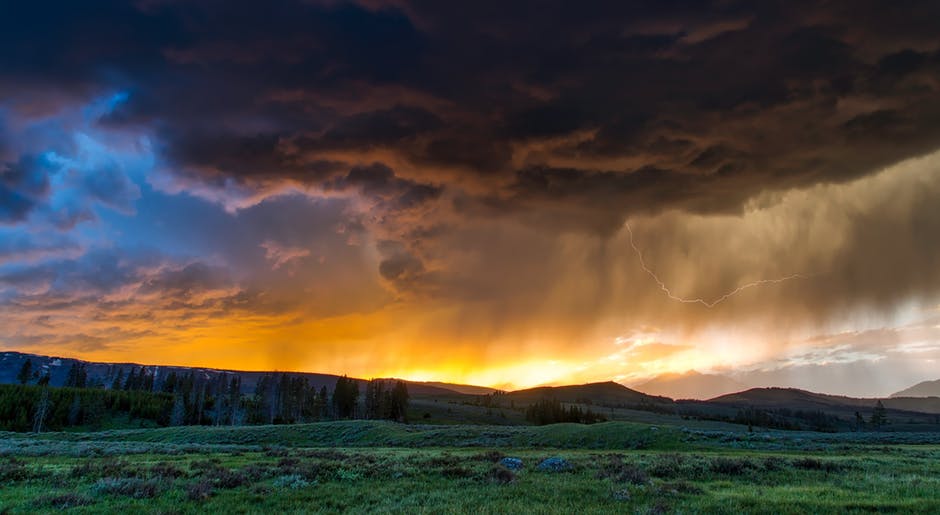How to predict weather using nature signs

When it comes to predicting the weather by using nature signs, old civilizations were masters in doing it. If you’re on a wilderness trip without checking the weather forecast before, there are plenty of ways to read the language of nature and tell what the weather will be like in the next hours and even days.
It’s of extreme importance to know what climate are you going to face on a wild adventure because you need to stay safe and take precautions if there’s a storm coming closer. Predicting weather is a crucial skill that every hiking and backpacking enthusiast should learn.
Air pressure

Changing air pressure means that the weather will change. If you feel low air pressure that means that rain clouds are nearby. Increasing air pressure means that a bright and sunny day is coming. A good way to measure air pressure without a barometer is to follow the direction of the campfire smoke. If the smoke goes straight upwards the air pressure is high. If it descends, it means the pressure is low. You may also notice that birds fly or perch lower as they feel the air pressure drop.
Clouds
Reading the height and the shape of the clouds is something you must learn if you want to have weather accuracy. High and white clouds mean a sunny and bright day. Black and low clouds are a sign of a rainstorm. A grey veil formed by clouds means that you need to run to a shelter.
Red Sky

A red sky at dusk and dawn is one of the most beautiful views that we all enjoy, especially near the beach. If the sky is red at dusk, it means that the next day will be sunny. On the contrary, a red sky at dawn means that the low pressure air is bringing moisture and rain.
Observe animal movement
Ancient people closely observed the behavior of animals to predict weather changes. Watch animals to see how their behavior changes with the weather change. For example, insect-eating birds like swallows fly low right before the rain, and ants tend to build their anthills with higher, steeper sides. Also, if you notice that the bees and butterflies disappear from the flowers they usually visit, it means the storm is coming.
Smell the flowers

The flower’s scent is strongest just before the rain because aromas spread more when there is moisture in the air. You may also notice the sweet, sharp smell of ozone just before a summer storm as it is carried to lower altitudes by the the storm’s downdraft. So, if you notice an unusually strong smell, it often means rain is on the way.
Look for rings around the Sun and the Moon
If you see milky-white rings around the Sun or Moon, it’s a sign of extreme humidity and moisture coming closer to the Earth’s surface.
Check hair
If your friend’s curly hair starts changing form during the hike and the curls start dropping, that means there is too much humidity in the air.
Dandelions and tulips
Plants like dandelion and tulips close their flowers when a thunderstorm is approaching. You can check the same with the flowers of scarlet pimpernel tree.

As you can see, there are numerous signs in nature that can help you detect how the weather will be and follow all the possible changes. Sometimes the old-fashioned nature reading skills are better than any modern world inventions. As outdoor enthusiasts, we need to learn a lot from our ancestors and enjoy the goods that nature gives us. Next time you’re going for a hike, try to practice weather reading with all the signs that surround you. Good luck!
If you have any comments then please drop us a message on our Outdoor Revival Facebook page
If you have a good story to tell or blog let us know about it on our FB page, we’re also happy for article or review submissions, we’d love to hear from you.
We live in a beautiful world, get out there and enjoy it. Outdoor Revival – Reconnecting us all with the Outdoors.
